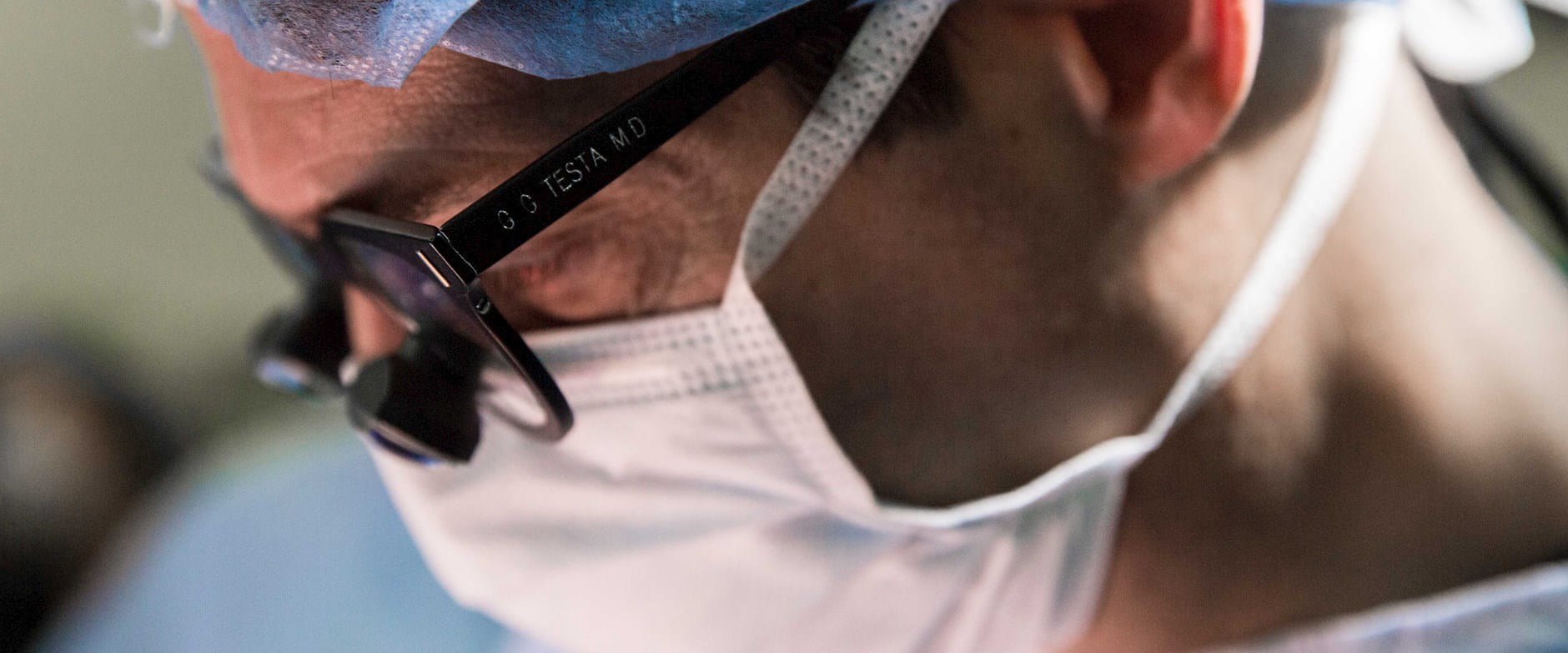
The Measure of Real Wealth
Inspired by his mother’s entrepreneurial spirit, Jason Brown, ’09, founded four successful companies by the age of 35, including the revolutionary fintech app Tally.
The Measure of Real Wealth
When Giuliano Testa, ’11 (XP-80), heard the baby’s cry, tears of joy began to stream down his cheeks. In a Dallas operating room in November 2017, alongside a dozen other medical professionals, he was witnessing the first person in the United States ever to give birth after receiving a uterus transplant. A year earlier, Testa had been the surgeon who performed the complicated, life-altering transplant surgery.
“From the anesthesiologist to the scrub nurse to me, there was nobody in the room who was not crying,” says Testa, a transplant surgeon for the past 26 years and Baylor University Medical Center’s chief of abdominal transplant for the Annette C. and Harold C. Simmons Transplant Institute. “Just to watch the faces of the mother and the father was emotional.”
The baby was born to a woman with Mayer-Rokitansky-Küster-Hauser syndrome, meaning she was missing a uterus from birth. It’s a condition that impacts around 1 in 4,000 women globally. This woman was certain she would never be able to give birth to a child. Now, her son JJ is five years old and thriving. Testa still receives photos from the family and texts of continued thanks.
The birth was a critical moment for the uterus transplant clinical trial that Testa launched as principal investigator in 2016. It was proof that Baylor and its medical team could be successful in the growing field of uterus transplants, joining the ranks of surgeons across Europe, the Middle East, and Asia who pioneered the procedure.
Uteruses weren’t originally in Testa’s wheelhouse—his first speciality was living-donor liver transplantation. After graduating from the University of Padova Medical School in Italy and completing his general surgery residency at the University of Chicago, Testa was instrumental in starting the first adult-living-donor liver-transplant program in Europe in the 1990s.
While working as professor of surgery and eventually serving as director of liver-transplant and hepatobiliary surgery, he enrolled in Booth’s Executive MBA Program in 2009 to sharpen his leadership skills and pursue a lifelong interest in economics. It was an intense two years, he says. By day Testa operated on patients, and by night he pored over textbooks.
Business school sharpened his analytical skills and taught him to be versatile—to first understand an environment and then adapt his leadership style to it.
“My father used to say, ‘If you want to lead and you have a plaque outside your door that says you’re the boss, you better be the boss,’” Testa recalls. Over the years, he’s developed a leadership style that’s bottom-up, inclusive, and focused on leading by example.
Booth also taught him the value of learning to define mistakes and self-reflect. “If you do that, you can only get better,” he says.

“I couldn’t hope for a better outcome....These kids are going to live a lifetime. It’s beautiful to think that.”
In 2014, with Testa at the helm, Baylor’s transplant center was performing 500 liver, kidney, and pancreas transplants annually. But leadership charged him with broadening the scope of the center’s capabilities. Around the same time, he learned at a conference about the first successful uterus transplant in Sweden in 2014.
Recipients were mostly women who were healthy but were born without a uterus. They usually learned as teens that they were missing the organ, and were told that they’d never carry a baby to term. Other candidates lacked a uterus due to medical conditions, including some cancers.
“The stories are tragic,” says Testa. “There’s a trauma for many of these women.”
Uterus transplants, Testa thought, could serve hundreds of thousands of people, and no hospitals in the United States were performing the procedure. He put together a compelling case for a uterus transplant clinical trial. Hospital leadership said yes.
His initial trial enrolled 10 patients. He invited the Swedish surgeon involved in the first successful transplant to Dallas to advise and guide his team. Uterus transplants are different than other transplants, because after recipients have children, the organ is removed so that the transplantees can avoid the need for lifelong antirejection medication. They also have unique difficulties attached.
“It was a tough start,” Testa says. “We made mistakes at first.” Out of the first four surgeries, only one transplant succeeded—ultimately, only five out of 10 were successful. The other five transplants didn’t take and had to be removed. The program could have been shut down. Testa had to use his Booth-honed skills to argue for his bold trial to continue.
And then, babies from the successful transplants started to be born. Time magazine took note, and the publication named Testa one of its Most Influential People of 2018 and one of its first Health Care 50 distinctions, for “innovating fertility.”
The hospital gave Testa more funding for a second round of trials, and 10 more women enrolled. “These women had courage and faith,” Testa says. Of those 10 transplants, nine were successful.
Now, six years after the first trial, and with Testa at the helm, Baylor’s program has grown to be the largest and most successful uterus-transplant program in the world. Surgeons have performed 23 uterus transplants, and women who have undergone the procedure have birthed 15 healthy babies.
“I couldn’t hope for a better outcome,” Testa says. Typically, transplant surgeons measure the success of surgeries in the number of years the recipients survive. Uterus transplants are different. “These kids are going to live a lifetime. It’s beautiful to think that.”
Living in Dallas with his wife, Ursula, and daughter, Vittoria Sofia, Testa continues to work hard and lead by example. Author or coauthor of more than 160 publications, he continues to do challenging research (currently digging into medical ethics) and try to push the future of uterus transplantation forward.
Testa’s recent data shows a 100 percent birth success rate for women who’ve had a successful transplant, a figure better than any other infertility treatment.
Unfortunately, the procedure isn’t covered by insurance despite the clear need and plenty of willing donors. Testa envisions a day when uterus transplants are as commonplace as liver or kidney transplants.
Last May around Mother’s Day, Testa reunited with the patients from his first clinical trial, including participants for whom the procedure was not a success, many of whom went on to use a surrogate or adopt.
“It was amazing to see these women with their families,” Testa says. “This type of transplant is something that can be of great help for people. I’m so glad there’s this option now.” He hopes that it can be a possibility for many more people seeking infertility solutions in the future.

Inspired by his mother’s entrepreneurial spirit, Jason Brown, ’09, founded four successful companies by the age of 35, including the revolutionary fintech app Tally.
The Measure of Real Wealth
Four alumni got together for a bucket-list hike into the Grand Canyon.
Dust in the Wind
On both sides of the world, Booth alumni jump to help their global community in response to the crisis.
Booth Alumni Unite to Fight COVID-19